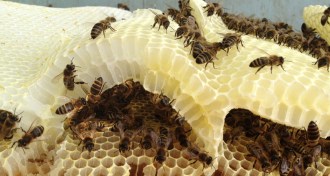All Stories
-
 Genetics
GeneticsWe’re more Neandertal than we thought
Neandertals contributed more to human traits than previously thought.
-
 Animals
AnimalsNew deep-sea sponge could play a starring role in monitoring ocean health
A new species of sponge that dwells on metal-rich rocks could help scientists track the environmental impact of deep-sea mining.
-
 Science & Society
Science & SocietyEconomics Nobel nudges behavioral economist into the limelight
Behavioral economist Richard Thaler started influential investigations of behavioral economics, which earned him the 2017 Nobel Memorial Prize in Economic Sciences.
By Bruce Bower -
 Animals
AnimalsAncient whale turns up on wrong side of the world
A Southern Hemisphere whale species was briefly a northern resident.
-
 Tech
TechSuperbugs may meet their match in these nanoparticles
Quantum dots and antibiotics hit bacteria with a one-two punch.
-
 Archaeology
ArchaeologyEurope’s Stone Age fishers used beeswax to make a point
Late Stone Age Europeans made spears with beeswax adhesive.
By Bruce Bower -
 Neuroscience
NeuroscienceNew book offers a peek into the mind of Oliver Sacks
The wide-ranging essays in Oliver Sacks’ ‘The River of Consciousness’ contemplate evolution, memory and more.
-

-
 Tech
TechNew atomic clock is most precise yet
This next-gen atomic clock ticks at a steady beat, but time will tell just how well it tells time.
-
 Agriculture
AgricultureMuch of the world’s honey now contains bee-harming pesticides
A controversial group of chemicals called neonicotinoids has a global impact, tests of honey samples show.
-
 Physics
PhysicsProton size still perplexes despite a new measurement
Study of hydrogen atoms supports the case for a smaller proton.
-
 Genetics
GeneticsAncient humans avoided inbreeding by networking
Ancient DNA expands foragers’ social, mating networks.
By Bruce Bower